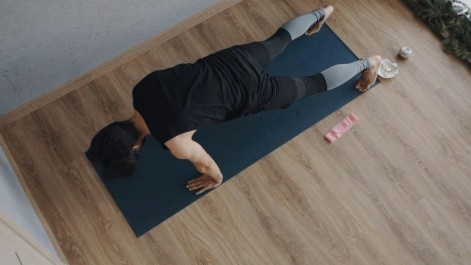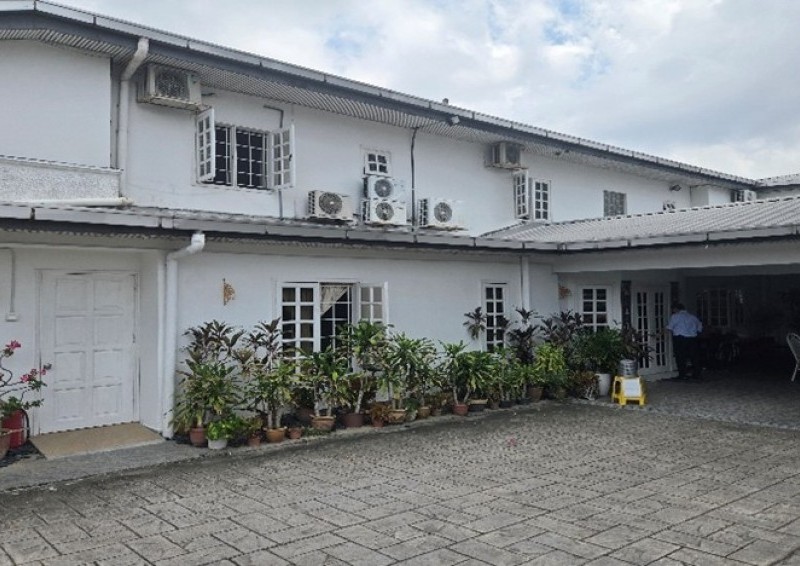Osteoporosis
By Alexander Slesarenko
One of the main problems in aged care was, and still is, falls.
Falls are the main cause of prolonged disability of people, their physical and psychological suffering; social isolation; decreasing quality of life; urgent hospitalization and surgery; progressive deterioration of health and even death.
Falls can occur at any age, however, in older people they can cause dramatic consequences, because bones of old people differ from young adults. This is due to osteoporosis.
Osteoporosis is the most common metabolic bone disease, characterized by low bone density and mass, and increased bone fragility. It affects 200,000 million people worldwide with significant potential complications. It is overlooked, undertreated and preventable. It is more common in the elderly > 50 years of age; in women more than in men with a ratio of 4:1; and in postmenopausal women.
Osteoporosis can be caused by disease (Thyroid pathology), deficiency (Ca, vit D), alcohol and tobacco use, drugs (steroids, PPI), and a sedentary lifestyle.
Pathogenesis of osteoporosis is caused by an imbalance between bone resorption and bone formation. Bone undergoes continuous remodelling throughout life. Bone resorption (by osteoclast) is followed by bone formation (by osteoblasts).
Bone mass peaks during the third decade of life and then gradually decreases by approximately 0.5% yearly. If bone resorption dominates over bone formation, osteoporosis may result.
Modifiable factors of osteoporosis are sedentary lifestyle; tobacco use; dietary deficiency; alcohol use; lack of sun exposure; gastroenteric diseases (coeliac, gastroenteritis).
Non-modifiable factors are age; female gender; positive family history; rheumatoid arthritis; gastroenteric diseases; (chron’s disease, ulcerative colitis, gastrectomy)
Oestrogen helps to block or control the production of osteoclasts, preventing osteoporosis during reproductive age in females. Oestrogen deficiency in postmenopausal women increases the number of osteoclasts and decreases the number of osteoblasts.
Resorption by osteoclasts accompanies washing Ca (calcium) out of the bones. Bones become porous, soft, brittle, and fragile. They can break easily even without serious accident like a fall e.g., lifting a heavy bag in the supermarket, or opening/closing car/house doors can cause an arm/shoulder fracture. Carrying heavy bags can cause a compression or vertebral fracture with or without nerve damage. A fracture of the jaw while chewing is also possible.
Osteoporosis can remain silent, until fractures occur. Most common is compression vertebral fracture which can lead to loss in height and angular kyphosis (may lead to restrictive lung disease and shortness of breath). This can also be accompanied by severe back pain and neurological symptoms including urinary and bowel incontinence.
Osteoporosis can manifest in hip fractures; distal radius fractures (colles fracture); rib fractures; humeral (shoulder) fractures; pelvic fractures; thigh and ankle fractures.
The diagnosis of osteoporosis isa history of poor nutrition, smoking/alcohol, decreased physical activity, presence of certain diseases and medication, previous fractures and trauma, and hormonal status (postmenopausal).
Laboratory studies will show calcium/phosphorus levels, total protein/albumin, and creatinine to estimate the kidney function.
Special attention should be given to cases with significant risk factors – older people may have multiple risk factors.
Osteoporosis is identified by X-ray when a fracture is suspected. Dual-energy X-ray absorptiometry (DEXA) will assess bone mass density and screening. The Dexa-scan is a method of choice for assessing bone mass density and the best screening method for postmenopausal women.
Postmenopausal women should be screened by 65 years of age. Postmenopausal women with risk factors should begin screening at 50 years of age if they are smoking; having already sustained fractures; suffer from rheumatoid arthritis, and/or have low BMI<21 kg/m2.
Treatment can commence at any time when osteopenia (-1 to -2.5T score) or osteoporosis (<-2.5 T-score) are revealed. The earlier, the better. Prevention is always better than the cure.
Consider lifestyle modifications and try to increase exercise, weight-bearing activities – walking, fitness, dancing, pilates, yoga. Smoking cessation, including passive smoking; alcohol cessation; fall prevention; dietary changes – calcium containing products (dairy, fish), Vitamin D supplementation; treatment of underlying gastroenteric disease; sufficient, but not excessive sun exposure.
Indications for pharmacological treatment apply to postmenopausal women with low BMD < -1 and history of fragility fractures; men and young adults with concomitant chronic diseases; low BMD; history of fragility fractures.
Before commencing treatment, calcium and vitamin D levels should be normalized.
Bisphosphonates (alendronate) are the first choice of treatment. Denosumab (monoclonal antibody) is also effective. Hormone Replacement Therapy (HRT) in pre-postmenopausal women with oestrogen and progesterone replacement is very effective. However, it is used when other perimenopausal symptoms are severe (hot flushes, mood swings, vaginal dryness). HRT use can not be prolonged due to severe risk of cancer.
Osteoporosis can be and should be treated and appropriate treatment brings a good prognosis.
Early detection of osteopenia/osteoporosis can prevent complications. Dexa-scan is the best diagnostic tool.
Lifestyle modifications, diet and activity are very important. Pharmacological treatment is effective
Bisphosphonates are the best choice. HRT in perimenopausal women is limited due to side effects
Falls prevention and risk minimisation are the areas of responsibility of HCAs and very important in the client with osteoporosis.
Back to Blog








